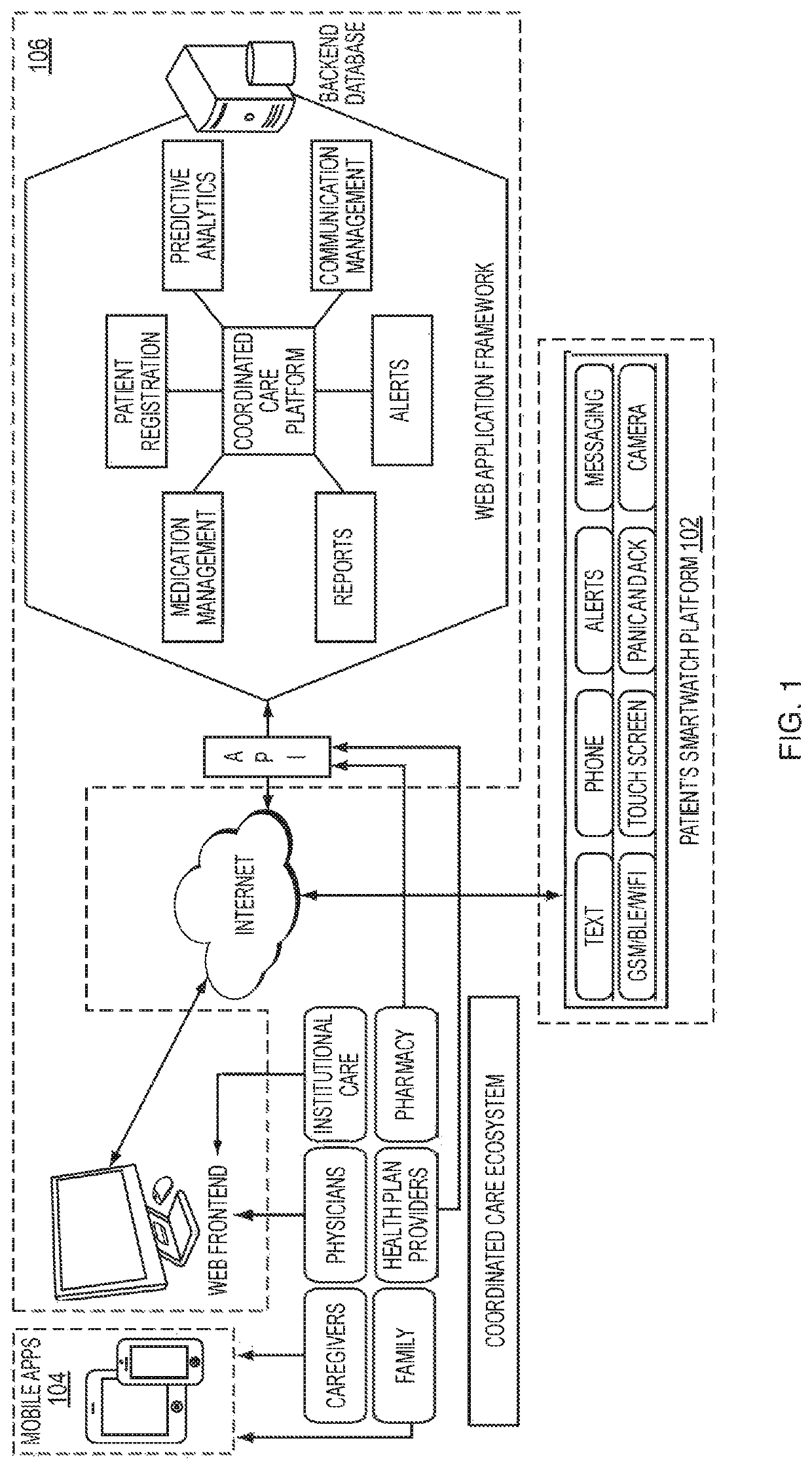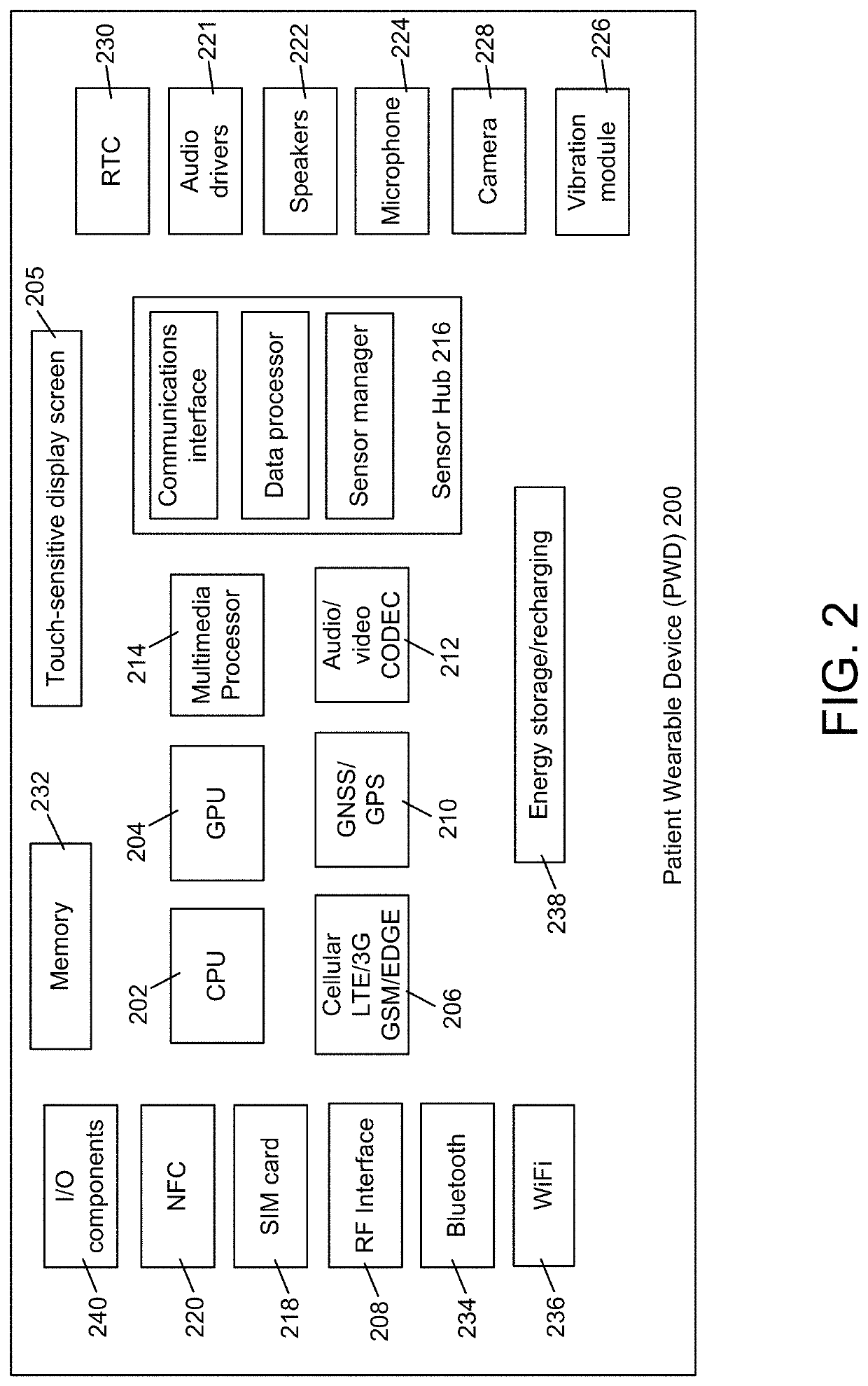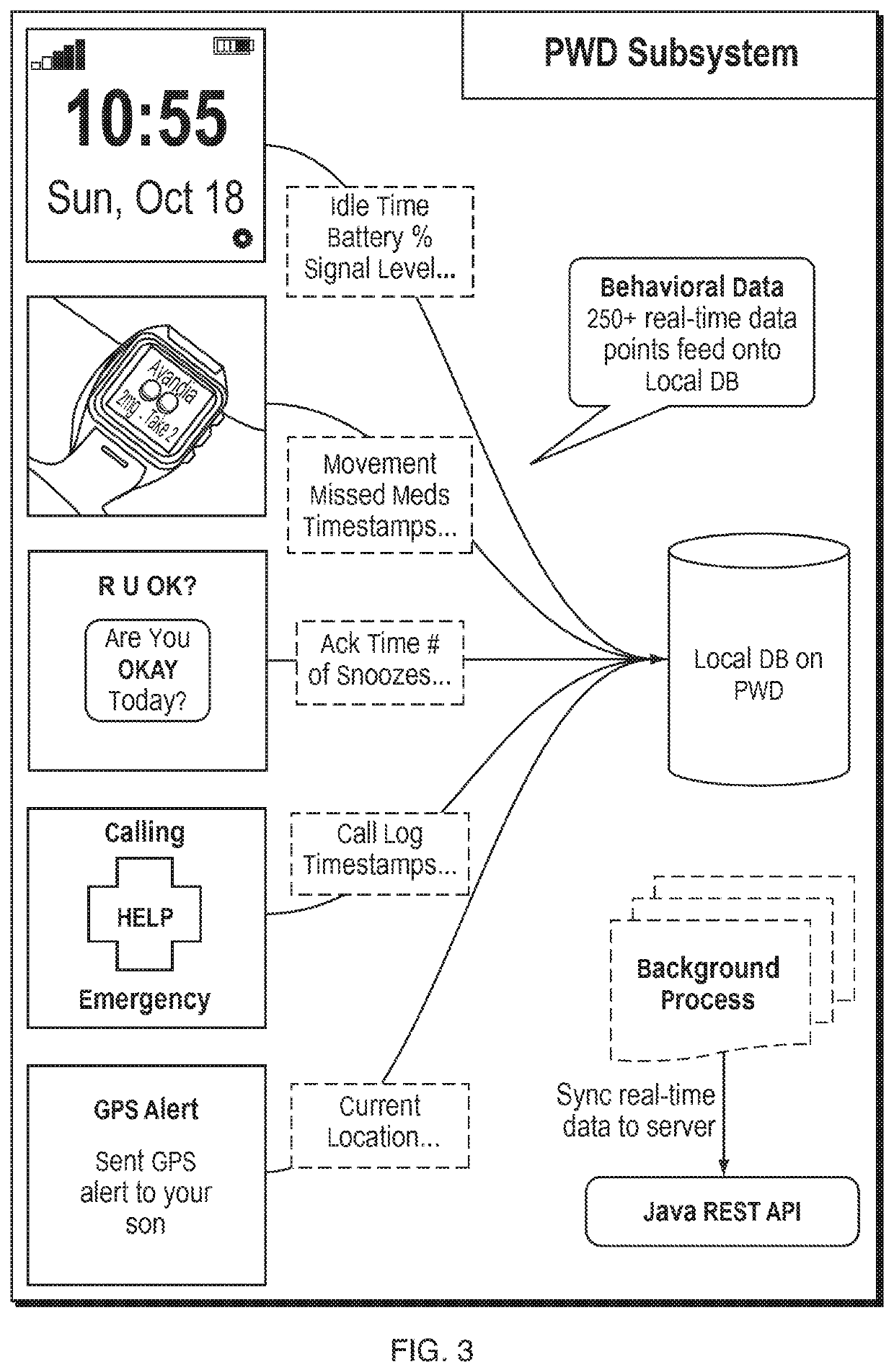Medication adherence device and coordinated care platform
a technology of medication adherence and coordinated care, applied in the direction of instruments, inference methods, drugs and medications, etc., can solve the problems of health care costs, medication non-adherence, confusion with the complexity of medication regimens, etc., to reduce patient “in-person” visits, confirm the effect of medication, and monitor the side effects
- Summary
- Abstract
- Description
- Claims
- Application Information
AI Technical Summary
Benefits of technology
Problems solved by technology
Method used
Image
Examples
Embodiment Construction
[0045]A description of example embodiments of the invention follows.
[0046]The teachings of all patents, published applications and references cited herein are incorporated by reference in their entirety.
[0047]An example embodiment of a Coordinated Care System (CCS) 100, shown in FIG. 1, includes a patient wearable device (PWD) 102, a caregiver mobile app 104, and a webserver 106. The caregiver mobile app 104 runs on a commercially-available platform such as a smartphone or electronic tablet. The webserver 106, which runs on a commercially-available platform such as a computer system or workstation, implements a coordinated care platform that seamlessly integrates the PWD, the caregiver mobile app, the webserver, and various third party providers (such as pharmacies and healthcare providers). The webserver 106 includes a web frontend, a server backend, a backend database and an application program interface (API). Target users for each of these components are shown in Table I.
[0048]
T...
PUM
 Login to View More
Login to View More Abstract
Description
Claims
Application Information
 Login to View More
Login to View More - R&D
- Intellectual Property
- Life Sciences
- Materials
- Tech Scout
- Unparalleled Data Quality
- Higher Quality Content
- 60% Fewer Hallucinations
Browse by: Latest US Patents, China's latest patents, Technical Efficacy Thesaurus, Application Domain, Technology Topic, Popular Technical Reports.
© 2025 PatSnap. All rights reserved.Legal|Privacy policy|Modern Slavery Act Transparency Statement|Sitemap|About US| Contact US: help@patsnap.com



